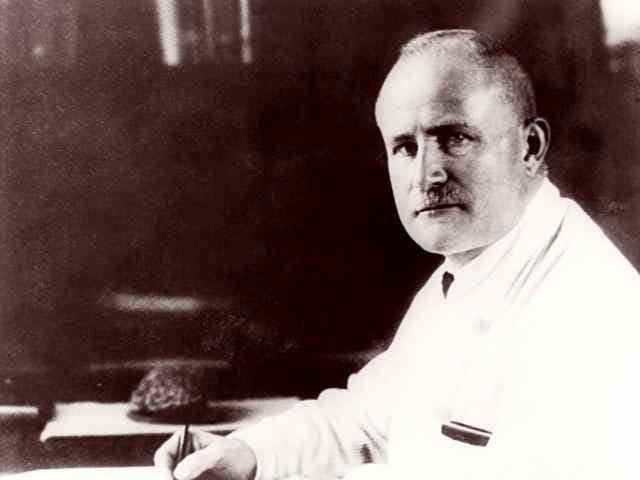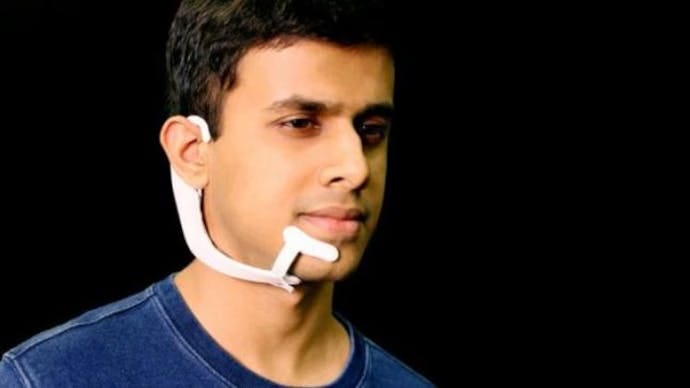The story of REAL telepathy
The story of REAL telepathy
From Hans Berger to Neuralink and AlterEgo
In 1893, a young German soldier named Hans Berger had an experience so extraordinary that it would alter the course of modern neuroscience. During a routine military exercise, his horse suddenly reared, throwing him directly into the path of an oncoming artillery carriage. The driver managed to pull the reins just in time — saving Berger’s life by a fraction of a second.
At that very instant, miles away, Berger’s sister was struck by an overwhelming sense of fear. Convinced that something terrible had happened to her brother, she persuaded their father to send a telegram to ensure he was safe.
To most, this would have been nothing more than a coincidence. But Berger was not one to dismiss mysteries lightly. Before joining the army, he had studied mathematics with the dream of becoming an astronomer, eager to explore the vast unknowns of the cosmos. Yet this strange event shifted his gaze inward — from the stars above to the unfathomable universe of the human mind.

Decades later, in 1940, Berger would recount that fateful day in his own words:
“It was a case of spontaneous telepathy, in which, at a time of mortal danger, as I contemplated certain death, I transmitted my thoughts, while my sister, who was particularly close to me, acted as the receiver.”
That experience left such a deep mark on him that when he returned from military service, he dedicated his life to finding a scientific explanation. In 1897, Berger earned his medical degree and began exploring the physical mechanisms behind what he called psychic energy — the unseen forces that might link one mind to another.
For years, he performed painstaking experiments, trying to capture measurable traces of mental activity. His efforts finally bore fruit in 1924, when Berger became the first person ever to record the brain’s electrical activity — a discovery that gave birth to the electroencephalogram (EEG), a term he himself introduced.
He found that the brain constantly emits faint electrical waves, changing with our states of consciousness — whether awake, relaxed, or asleep. But these signals were far too weak to explain the sort of mind-to-mind connection he believed he had experienced with his sister.
Despite his cautious optimism, Berger hesitated to publish his findings. He feared that the scientific establishment would dismiss his work as eccentric. His concern proved justified: when he finally presented his results, his peers met them with skepticism and even ridicule. Many regarded him as a dreamer rather than a disciplined researcher.
It took years before Berger’s work received the acknowledgment it deserved. In 1934, two British physiologists — Edgar Douglas Adrian and B. H. C. Matthews — repeated his experiments and confirmed his remarkable findings. The rhythmic brainwave patterns Berger had observed were real, measurable, and reproducible.
Their confirmation transformed Berger’s lonely pursuit into a new scientific discipline. By the late 1930s, electroencephalography was gaining international acceptance. Laboratories in Britain, France, and the United States began using EEG to study brain function, diagnose neurological disorders, and explore the mysteries of sleep and consciousness.
Though Berger never solved the enigma of telepathy, he had achieved something far greater — he had opened a window into the living human brain. His quest to understand how thoughts might travel across space led instead to a technology that could, for the first time, reveal the mind’s hidden rhythms.
A little more than eighty years after Berger’s death, humanity would take another leap — this time not just observing the brain, but communicating directly with it.
In 2024, more than eight decades after Hans Berger’s passing, a new chapter in the story of mind-to-mind communication unfolded. Noland Arbaugh, paralyzed from the shoulders down after a diving accident in 2016, became the first person to receive a Neuralink brain implant.
For the first time since his injury, Arbaugh regained a remarkable kind of control — not over his body, but over the digital world. Simply by thinking, he could move a cursor across a computer screen, type messages, post on social media, and even operate a robotic arm or a drone.
In a sense, Arbaugh had achieved the very thing Berger once imagined: genuine telepathy and even a form of telekinesis — not through mysticism, but through science and engineering.

At its core, Neuralink builds upon the same principle Berger uncovered a century earlier — the measurement of electrical activity within the brain. The difference lies in precision. While Berger’s early instruments could only detect faint surface signals through the scalp, Neuralink’s microscopic electrodes record high-fidelity signals directly from inside the brain. These signals are then interpreted by sophisticated machine learning algorithms capable of decoding thought patterns in real time.
Imagine standing at the doorway of a grand ballroom filled with thousands of conversations happening at once — from that distance, all you hear is a murmur. That’s what EEG picks up: a blur of neural chatter. But by stepping into the room, listening closer to a handful of voices, you begin to make sense of what’s being said. Neuralink does exactly that — it listens from the inside.
Long before Neuralink, scientists had already found ways to tap directly into the brain. One of the earliest and most influential tools was the Utah Array — a small silicon grid embedded with around a hundred microscopic needles, each capable of recording signals from nearby neurons. These devices enabled paralyzed individuals to control robotic arms, type on computers, and even regain limited sensory feedback.
Yet, compared to Neuralink’s approach, the Utah Array now seems almost primitive — rigid, invasive, and relatively coarse. Neuralink’s innovation lies in its ultra-thin flexible electrodes, each thread finer than a human hair. These polymer filaments can be positioned precisely within the brain while minimizing tissue damage.
The implant itself is a compact disk about two centimeters wide and one centimeter thick — roughly the size of a coin. Dozens of those delicate threads extend from its edges, gently inserted into targeted brain regions. Unlike the fixed grids of older implants, Neuralink’s design allows for tailored placement that adapts to each patient’s unique brain architecture.
Such surgical precision cannot be achieved by human hands alone. Neuralink employs a robotic surgeon capable of inserting each thread with microscopic accuracy while avoiding blood vessels — a feat that drastically reduces trauma to brain tissue. Once implanted, the device replaces a small section of the skull and becomes completely invisible from the outside.
Within the sealed implant, miniature electronics amplify and filter the brain’s electrical signals, transmitting them wirelessly to an external computer. It’s an elegant, seamless interface between biology and technology — in many ways, the Tesla of EEGs: sleek, efficient, and built on the foundation Berger laid a century ago.
Neuralink’s true breakthrough goes beyond simply listening to the brain. Its electrodes can also stimulate neurons, sending tiny electrical pulses back into specific regions of neural tissue. This opens a frontier of astonishing medical possibilities: restoring sight to the blind, reconnecting damaged spinal circuits, or allowing paralyzed patients to move prosthetic limbs through thought alone.
Still, not everyone is eager to have a hole drilled into their skull — no matter how advanced the technology. Fortunately, researchers have been developing non-invasive alternatives that bring us closer to similar results without surgery.
One of the most fascinating of these is AlterEgo, a project that began at the MIT Media Lab and was first revealed in 2018. Now an independent startup, AlterEgo takes a radically different approach: instead of reading signals from inside the brain, it detects the subtle electrical activity generated by facial and jaw muscles when we silently form words in our minds.

Its electrodes, placed along the sides of the face and jawline, pick up these subvocal signals — the faint muscular impulses that occur even when we “speak” only in thought. The system then translates those signals into text or speech, allowing a person to communicate silently with a computer or another human being.
When paired with a bone-conduction earpiece, which transmits sound through the skull rather than through air, the result feels eerily like true telepathy. You think the words you want to say, and the listener “hears” them directly — not through spoken sound, but as an inner voice in their mind.
AlterEgo isn’t limited to person-to-person communication — it’s also a natural interface for interacting with artificial intelligence. Imagine holding a completely silent conversation with ChatGPT or any other language model — not through typing or speaking, but simply by thinking your words.
You “speak” through the tiny electrical impulses along your jaw, and the AI’s response reaches you through bone conduction — a private, internal dialogue happening entirely within your own head—no microphones, no speakers, no outward signs that communication is taking place.
It’s not just a new kind of user interface; it’s a new kind of dialogue — one that blurs the boundary between thought and expression, between mind and machine.
What makes this story truly poetic is how it comes full circle. Our pursuit of artificial telepathy began with a man who was trying to understand the real thing. When Hans Berger’s sister somehow sensed his near-death experience more than a century ago, he devoted the rest of his life to uncovering the invisible forces linking mind and body.
He never discovered how that mysterious connection worked — yet his curiosity and persistence paved the way, making it scientifically possible. The EEG gave humanity its first glimpse into the living brain, and the technologies that followed — from Neuralink’s implants to AlterEgo’s silent speech interface — are extending that vision into a new era of communication.
Telepathy, once a matter of myth and mysticism, has begun to take tangible form — not through the paranormal, but through precision engineering and neuroscience.
Berger’s lifelong dream of connecting minds is finally being realized, piece by piece. And though he did not live to see it, every signal transmitted between a brain and a machine is, in a sense, a continuation of his experiment — proof that curiosity, once sparked, can echo through generations.